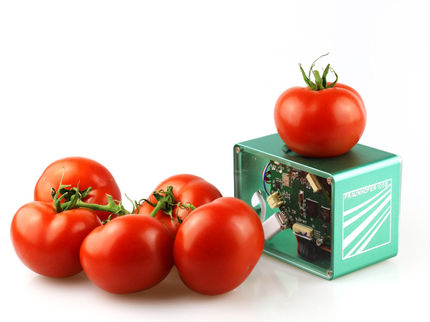Fluorescence method detects mercury contamination in fish
Advertisement
Researchers from the University of Burgos (Spain) have developed a fluorescent polymer that lights up in contact with mercury that may be present in fish. High levels of the metal were detected in samples of swordfish and tuna. According to the conclusions of another Spanish study, mercury exposure is linked to reduced foetal and placental growth in pregnant women.

This is a swordfish auction in the fish market of Vigo (Spain).
José Antonio Gil Martínez
The presence of the toxic metal mercury in the environment comes from natural sources, however, in the last decades industrial waste has caused an increase in concentrations of the metal in some areas of the sea. In the food chain, mercury can be diluted either in organic form as methylmercury (MeHg+) or as an inorganic salt, the cation Hg2+.
Now, researchers from the University of Burgos have created a fluorescent polymer, JG25, which can detect the presence of these two forms of mercury in fish samples.
"The polymer remains in contact with samples extracted directly from the fish for around 20 minutes. Then, while is being irradiated with ultraviolet light, it emits a bluish light, which varies in intensity proportionally to the quantity of methylmercury and inorganic mercury present in the fish," explains Tomás Torroba, lead author of the paper.
A portable polymer probe, which can be used in situ, was used to apply the technique to 2-gram samples from a range of fish species. The qualitative relationship between the mercury levels in fish and the increased fluorescence was verified using chemical analysis (called ICP-Mass).
The research showed that the larger is the fish the higher are the levels of mercury: between 1.0 and 2.0 parts per million for swordfish, tuna and dogfish, around 0.5 ppm in conger eels and 0.2 ppm in panga. No mercury was found in farmed salmon. These are large fish and at the top of the food chain, but the metal is not present in captivity due to the lack of an industrial or natural source.
The toxicity of fish depends on the amount mercury found in the fish presented in the diet. According to the recommendations of the European Food Safety Authority (EFSA), the tolerable weekly intake of methylmercury should be no more than one serving containing amounts over 1.6 μg/kg (micrograms per kilogram of fish) or 4 μg/kg for inorganic mercury (this amount is close to the one detected in the study).
However, the current trend for this limit is to be lowered. For example, the United States food safety agency, the FDA, goes beyond this and recommends consuming no more than one portion per week of fish containing concentrations over 1 μg/kg, a tendency other countries are likely to follow.
"Contamination of above 0.5 ppm in a food is already thought to be a considerable level," Torroba explains. "Several of the fresh tuna and swordfish samples we analysed exceed and even double this amount. This is why experts recommend that pregnant women reduce their weekly intake of certain types of fish, such as swordfish, due to possible risks to the foetus."
Original publication
Other news from the department science
Most read news
More news from our other portals
See the theme worlds for related content
Topic World Food Analytics
Food analysis methods enable us to investigate the quality, safety and composition of our food. Whether in the traceability of food, the detection of contaminants or the verification of nutritional information - food analytics plays a crucial role in our health and nutrition. Welcome to the exciting world of food analytics!

Topic World Food Analytics
Food analysis methods enable us to investigate the quality, safety and composition of our food. Whether in the traceability of food, the detection of contaminants or the verification of nutritional information - food analytics plays a crucial role in our health and nutrition. Welcome to the exciting world of food analytics!


































































